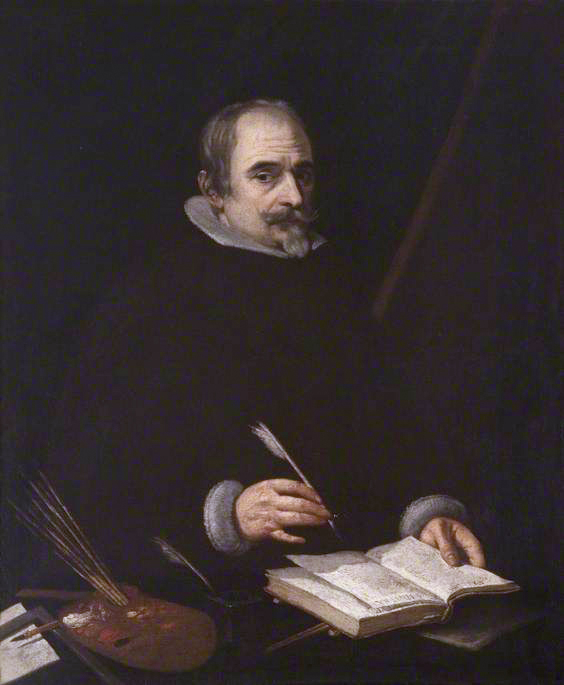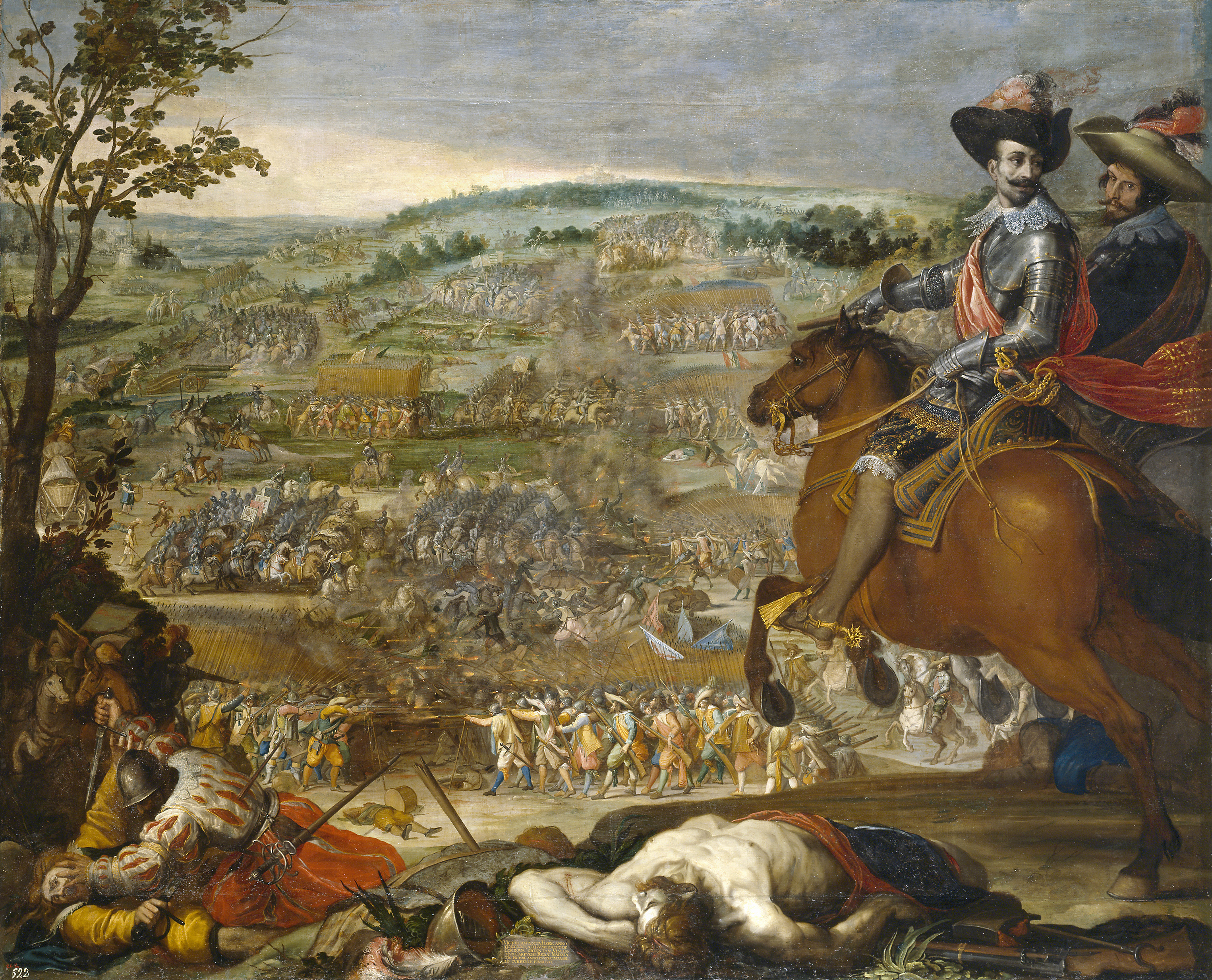Vincenzo Carducci on:
[Wikipedia]
[Google]
[Amazon]



 Vincenzio Carduccio (in Spanish, sometimes ''Vicencio'' or Vicente Carducho; 1576 or 1578–1638) was an Italian painter who spent his career in Spain.
Vincenzio Carduccio (in Spanish, sometimes ''Vicencio'' or Vicente Carducho; 1576 or 1578–1638) was an Italian painter who spent his career in Spain.
Bartolommeo and Vincenzo Carducci
- Catholic Encyclopedia article
''Velázquez ''
exhibition catalog from The Metropolitan Museum of Art (fully available online as PDF), which contains material on Carducci (see index) {{DEFAULTSORT:Carducci, Vincenzo 1568 births 1638 deaths 16th-century Italian painters Italian male painters 17th-century Italian painters Painters from Florence 16th-century Spanish painters Spanish male painters 17th-century Spanish painters Spanish Baroque painters Italian art historians


 Vincenzio Carduccio (in Spanish, sometimes ''Vicencio'' or Vicente Carducho; 1576 or 1578–1638) was an Italian painter who spent his career in Spain.
Vincenzio Carduccio (in Spanish, sometimes ''Vicencio'' or Vicente Carducho; 1576 or 1578–1638) was an Italian painter who spent his career in Spain.
Biography
He was born inFlorence
Florence ( ; it, Firenze ) is a city in Central Italy and the capital city of the Tuscany region. It is the most populated city in Tuscany, with 383,083 inhabitants in 2016, and over 1,520,000 in its metropolitan area.Bilancio demografico ...
, and was trained as a painter by his brother Bartolomeo Carduccio, whom he followed to Madrid
Madrid ( , ) is the capital and most populous city of Spain. The city has almost 3.4 million inhabitants and a metropolitan area population of approximately 6.7 million. It is the second-largest city in the European Union (EU), and ...
as a boy.
He initially painted some works at Valladolid
Valladolid () is a municipality in Spain and the primary seat of government and de facto capital of the autonomous community of Castile and León. It is also the capital of the province of the same name. It has a population around 300,000 peop ...
and helped his brother paint the Escorial for Philip II of Spain
Philip II) in Spain, while in Portugal and his Italian kingdoms he ruled as Philip I ( pt, Filipe I). (21 May 152713 September 1598), also known as Philip the Prudent ( es, Felipe el Prudente), was King of Spain from 1556, King of Portugal from ...
. He returned to the court of Philip III in Madrid in 1606 and helped decorate the recently rebuilt Palacio del Pardo. While at work his brother died, and Vicente took his place. He painted there a history of Achilles. When finished, he was employed for four years by the monks of the Chartreuse of el Paular to decorate their monastery with 54 canvases of historical figures in the great cloister. 27 represent the life of St. Bruno, and 27 are of martyrs.
He worked a great deal for the subsequent monarch, Philip IV, and his best pictures are those he executed for him as decorations, now preserved in the Prado. Examples of his work are preserved in Toledo, Segovia, and several other Spanish cities. For many years he labored in Madrid as a teacher of his art, and among his pupils were Juan Rizi, Pedro de Obregón, Vela, Francisco Collantes
Francisco Collantes (1599–1656) was a Spanish Baroque era painter.
Collantes was born in Madrid but sought influence from Jusepe de Ribera and the Neapolitan School. He was also influenced by 16th century Venetian
Venetian often means from o ...
, and other distinguished representatives of the Spanish school during the 17th century.
He also authored a treatise, or , published in 1633. It is written in classical tradition as a dialogue between a master and an apprentice. Following the strict piety of the Spanish realm, the text urges:
:"Shame on me and all those who rash and impudent, and without meditation and without improving our souls, in this world set out to paint a portrait of the most Holy Queen of Angels, Mother of the Almighty, she who was full of grace, she who will be our means for gaining heaven...How well this was understood by that holy monastic painter Brother Juan Fesulano..(who) never started to paint without praying first..and (who) wept whenever he painted Christ on the Cross."Carducho also assailed the verism of practiced by some such as Velázquez, and particularly was critical of
Caravaggio
Michelangelo Merisi (Michele Angelo Merigi or Amerighi) da Caravaggio, known as simply Caravaggio (, , ; 29 September 1571 – 18 July 1610), was an Italian painter active in Rome for most of his artistic life. During the final four years of h ...
and his followers, on whom he wrote:
:"His new dish is cooked with condiments, with so much flavor, appetite, and relish that he has surpassed everybody with such choice tidbits and a license so great that I am afraid the others will suffer apoplexy in ther true principles, because most painters follow him as if they were famished. They do not stop to reflect of the fire of his talent which is so forceful, nor whether they are able to digest such an impetuous, unheard of, and incompatible technique, nor whether they possess Caravaggio's nimbleness of painting without preparation. Did anyone ever paint, and with so much success, as this monster of genius and talent, almost without rules, without theory, without learning and meditation, solely by the power of this genius and the model in front of him which he simply copied so admirably.? I heard a zealot of our profession say that the appearance of this man mean a foreboding of ruin and end of painting, and how at the close of this visible world the Antichrist, pretending to be the real Christ with false and strange miracles and monstrous deeds would carry with him to damnation a very large number of people moved by his works which seemed so admirable (although they were in themselves deceptive, false, and without truth or permanence).:
"Thus this Anti-Michelangelo with his showy and external copying of nature his admirable technique and liveliness has been able to persuade such a large number of all kinds of people that his is good painting and that his theory and practice are right, that they have turned their backs on the true manner of perpetuating themselves and on true knowledge in this matter."Carducho died in Madrid. The largest collection of his Works remain in the
Prado Museum
The Prado Museum ( ; ), officially known as Museo Nacional del Prado, is the main Spanish national art museum, located in central Madrid. It is widely considered to house one of the world's finest collections of European art, dating from th ...
. The Real Academia de Bellas Artes de San Fernando owns two paintings of the series made for the Basilica de San Francisco el Grande in Madrid.
References
*''A Documentary History of Art'', Volume II, ''Michelangelo and the Mannerists; the Baroque; and the eighteenth Century'', edited by Elizabeth Gilmore Holt. Doubleday Anchor Book. (1958) p208-212. *Notes
External links
Bartolommeo and Vincenzo Carducci
- Catholic Encyclopedia article
''Velázquez ''
exhibition catalog from The Metropolitan Museum of Art (fully available online as PDF), which contains material on Carducci (see index) {{DEFAULTSORT:Carducci, Vincenzo 1568 births 1638 deaths 16th-century Italian painters Italian male painters 17th-century Italian painters Painters from Florence 16th-century Spanish painters Spanish male painters 17th-century Spanish painters Spanish Baroque painters Italian art historians